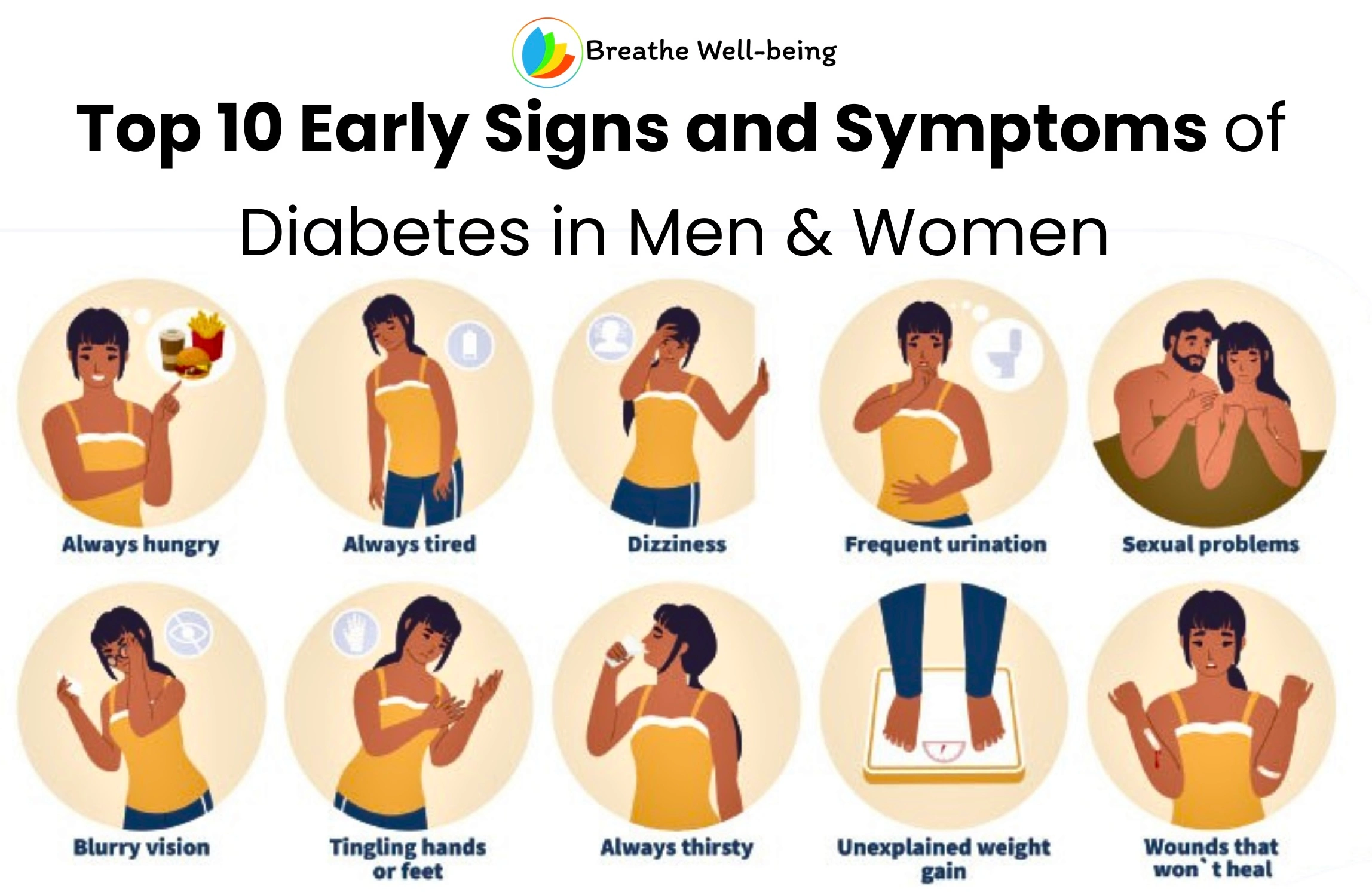
Diabetes affects millions of people worldwide, and early detection is crucial for effective management and preventing complications. Knowing the warning signs of diabetes can make a big difference, allowing you to take control of your health before symptoms worsen. Here are the top 10 early warning signs of diabetes that you shouldn’t ignore.
1. Excessive Thirst (Polydipsia)
One of the first signs of diabetes is a constant feeling of thirst, known as polydipsia. This happens because high blood sugar levels cause the kidneys to work harder to filter and absorb the extra glucose. When they can’t keep up, glucose is excreted through urine, taking fluids with it, which leads to dehydration and increased thirst.
2. Frequent Urination (Polyuria)
With increased thirst comes frequent urination, or polyuria. This symptom is especially noticeable at night, as the kidneys are working overtime to expel excess glucose. Frequent urination is a common early warning sign of diabetes, and if left unchecked, it can lead to dehydration and loss of essential nutrients.
3. Unexplained Weight Loss
Losing weight without trying could indicate diabetes, particularly Type 1. When the body cannot use glucose as a source of energy, it starts breaking down muscle and fat for fuel, leading to rapid weight loss. Unintentional weight loss of 5-10% of your body weight over a few months should be a red flag.
4. Extreme Hunger (Polyphagia)
Even after eating a meal, those with diabetes may feel constantly hungry. This is known as polyphagia. Since glucose is not entering cells to provide energy, the body perceives it as a lack of fuel and triggers hunger. Eating more doesn’t solve the problem, as glucose still isn’t being effectively used.
5. Fatigue and Weakness
Feeling constantly tired and low on energy is another early sign of diabetes. With insulin resistance or insufficient insulin production, glucose can’t enter the cells to provide energy, leading to persistent fatigue and weakness. This fatigue often goes beyond the usual tiredness from lack of sleep or exertion.
6. Blurred Vision
High blood sugar levels can affect the lens in the eye, causing it to swell and leading to blurry vision. If left untreated, this can cause more serious vision problems, even blindness. Regular eye exams can detect changes early on and help you manage your blood sugar levels to protect your vision.
7. Slow-Healing Wounds
Cuts, scrapes, and other wounds that take longer to heal may be a warning sign of diabetes. High blood sugar levels slow down the healing process by affecting blood circulation and reducing the effectiveness of immune cells. If you notice that minor injuries are taking longer than usual to heal, it’s worth consulting a doctor.
8. Frequent Infections
Those with diabetes are more susceptible to infections, especially urinary tract infections (UTIs), skin infections, and yeast infections. High blood sugar creates a favorable environment for bacterial and fungal growth, leading to recurring infections that can be hard to manage without proper blood sugar control.
9. Tingling or Numbness in Hands and Feet (Neuropathy)
Diabetic neuropathy, or nerve damage, often begins as a tingling or numbness in the extremities. High blood sugar levels can damage nerves over time, particularly in the hands and feet. If you experience frequent numbness, tingling, or pain in these areas, it could be an early sign of diabetes.
10. Dark Skin Patches (Acanthosis Nigricans)
Dark patches of skin, often around the neck, armpits, or groin, can be an indicator of insulin resistance. Known as acanthosis nigricans, this condition causes areas of the skin to darken, thicken, and become velvety in texture. This is often one of the first physical signs of prediabetes or diabetes.
Why Early Detection Matters
Catching these warning signs early allows for timely intervention. With proper diet, lifestyle changes, and medical management, diabetes can be controlled, reducing the risk of severe complications like heart disease, nerve damage, and kidney failure.
When to See a Doctor
If you or a loved one experience any combination of these symptoms, it’s important to consult a healthcare professional. A simple blood test can measure blood sugar levels and confirm if diabetes or prediabetes is present. Early detection is key to preventing complications and ensuring a better quality of life.
Final Thoughts
Recognizing these early warning signs of diabetes can empower you to take charge of your health. By understanding your body and acting on these symptoms, you can address diabetes before it leads to severe health problems. With a proactive approach, you can live well and manage diabetes effectively.

